• Marvin Harrison Jr. is the safest rookie wide receiver in a long time: Harrison’s talent, the draft capital spent on him, and the opportunity for playing time and targets leave a lot fewer question marks for Harrison than all other rookies from recent seasons.
• The Arizona Cardinals offense could hold Harrison back: There are pros and cons to having Kyler Murray at quarterback, and offenses that Drew Petzing has been a part of in recent years have been more run-heavy.
• Get a head start on fantasy football: Use PFF's fantasy football mock draft simulator to create real live mock draft simulations to get ready for your live draft!
Estimated reading time: 6 minutes
The player profile series gives the most in-depth view of a player possible using the best data points at PFF’s disposal to look at how good the player has performed, what competition the player has for touches, and how other teammates and coaches will impact each player's performance.
Last updated: 7:15 a.m. Monday, July 8
Player performance
Harrison is the best wide receiver draft prospect in recent memory. He ranks near or at the top in every important metric below, outside of routes run and avoided tackles, and we can expect him to run more routes in the NFL.
Seven wide receivers were selected in the first half of the first round from 2021-2023. Six finished as top-32 fantasy wide receivers, except Jameson Williams, who came into the NFL with an ACL tear. Both Ja’Marr Chase and Jaylen Waddle were the only ones picked in the top six, and they finished fifth and 13th respectively. Given how he compares to those receivers, it’s understandable that he has the ninth-highest ADP for a wide receiver currently.
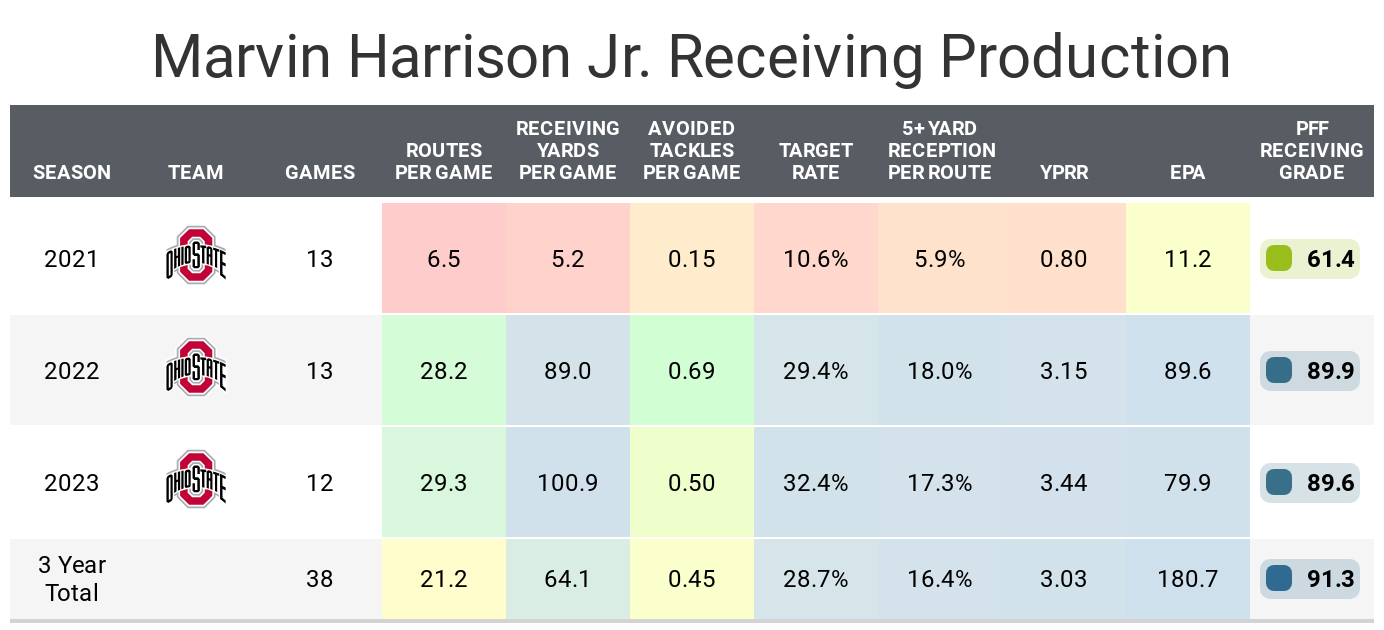
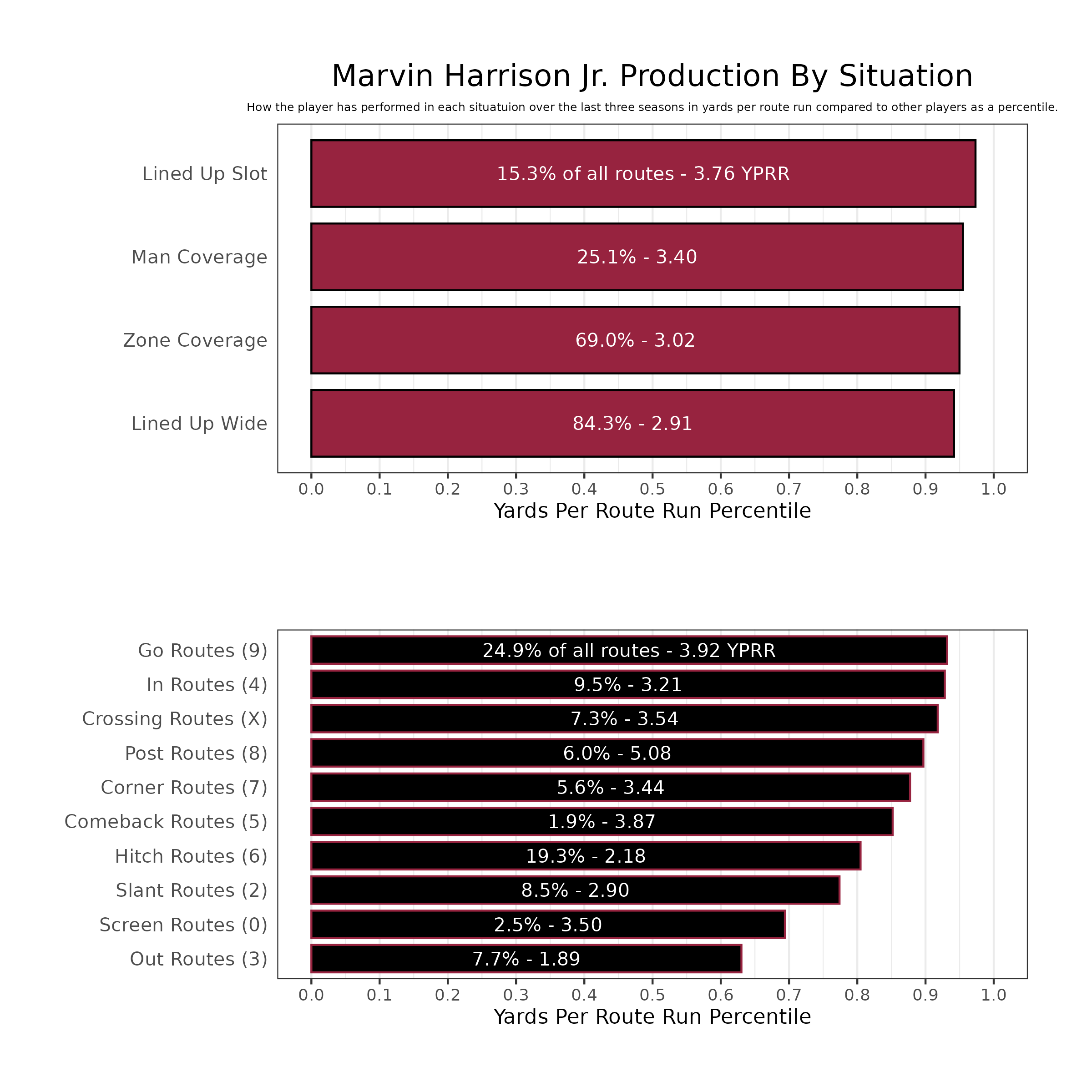
Competition for touches
Part of Harrison's appeal as a rookie is he doesn’t have much competition for touches. He was Ohio State's X receiver the last two seasons, and last season, Marquise Brown was the Arizona Cardinals‘ X receiver. Brown is with the Kansas City Chiefs now, so Harrison can smoothly fit into the Cardinals' depth chart without competition. Michael Wilson was the Z receiver last year while Greg Dortch specialized in the slot. They have three veteran backups in Zay Jones, Chris Moore and Zach Pascal, and they all have more experience at Z or in the slot compared to the X position. Brown was playing over 90% of Arizona's offensive snaps more often than not when healthy last season, so Harrison should similarly play over 90% of the snaps in a typical game.
Wilson and Dortch have both graded well for role players. Wilson can be more of a deep threat while Dortch can take care of the slot responsibilities. Both will have respectable target shares, but neither will interfere with Harrison’s workload. Lead running back James Conner averaged less than two receptions per game, which leaves Trey McBride as Harrison’s primary competition for targets. McBride led all tight ends with 24.5% targets per route run.
McBride could keep the exact same target rate as last season, and that still wouldn’t stop Harrison from ranking top 10 in targets per route run this season.

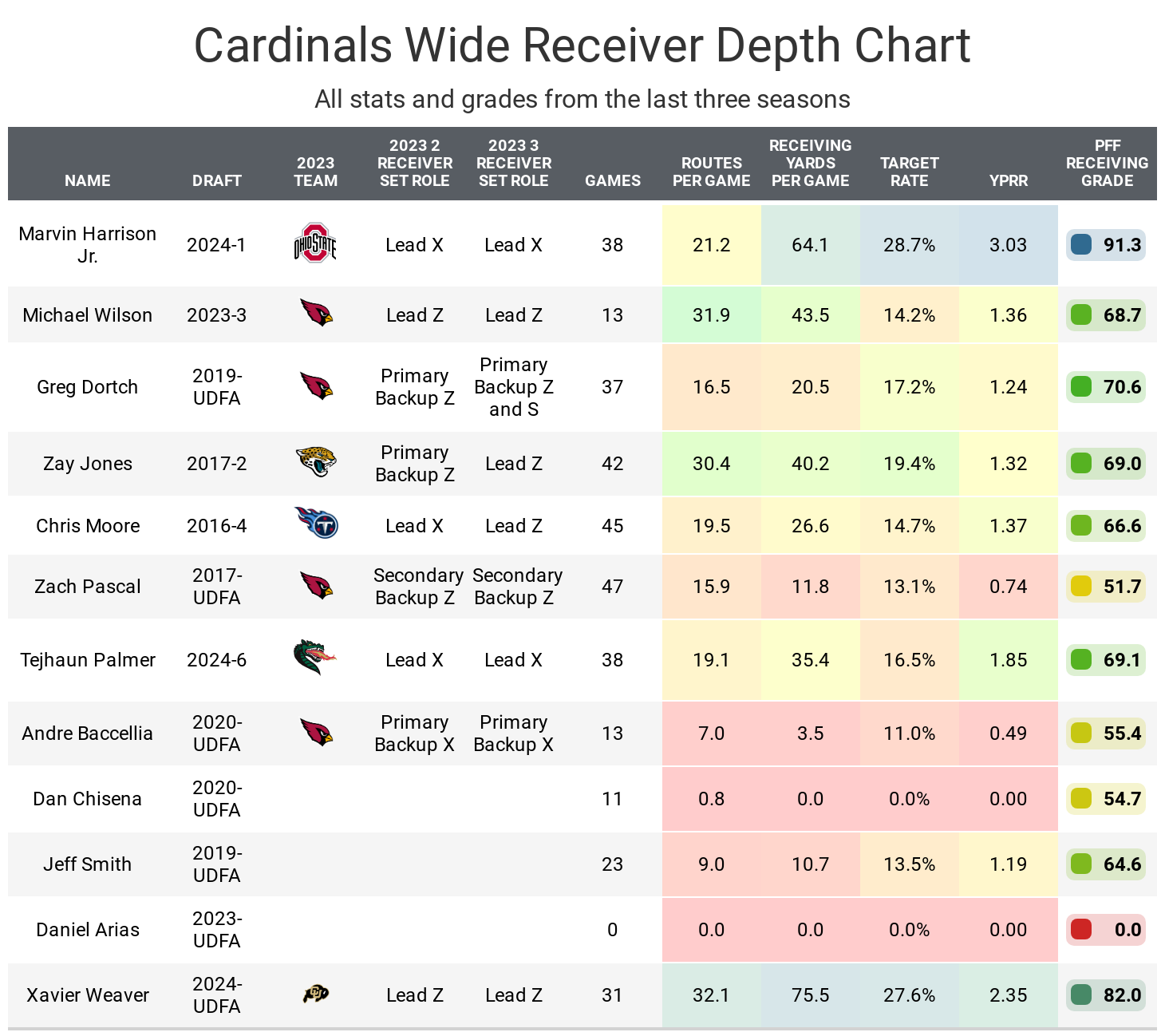
Impact of teammates
To this point, everything around Marvin Harrison Jr. has been straightforward. There has been a clear history of great performance to go along with a direct path to elite playing time and target share. What could potentially differentiate Harrison from being somewhere in the top-five among wide receivers as a rookie to just another fantasy starter or anywhere in between is Kyler Murray and Drew Petzing.
Murray’s biggest asset, outside of his duel-threat abilities, is his deep passing. He throws deep more than most quarterbacks and is more accurate when doing so. Harrison was a more well-rounded receiver in college than other deep-threat options, but he ranked in the 85th percentile in yards per route run on the traditionally deeper routes. Big plays on deep passes could become an even bigger part of his game.
The only concern with Murray is he’s willing to move past his first read more than most quarterbacks, and Harrison should be the first read on a high percentage of pass plays. It’s not a huge concern currently, but it’s at least worth monitoring.
The biggest question mark is how offensive coordinator Drew Petzing will adjust his offense for Harrison. In his one season as offensive coordinator, he was more run-heavy with a lot of passes to tight ends, which is similar to Kevin Stefanski in recent seasons. This could be part of Petzing’s philosophy, or it could simply be that he’s coached on teams with Nick Chubb and James Conner at running back in addition to David Njoku and Trey McBride at tight end. Luckily, Petzing did spend time as a wide receivers coach with the Minnesota Vikings from 2016-2019, where he got to spend a lot of time with Adam Thielen and Stefon Diggs, which should help him with Harrison.
Potentially, the biggest thing that could hold Harrison’s fantasy value back is if the Cardinals remain a run-first offense.
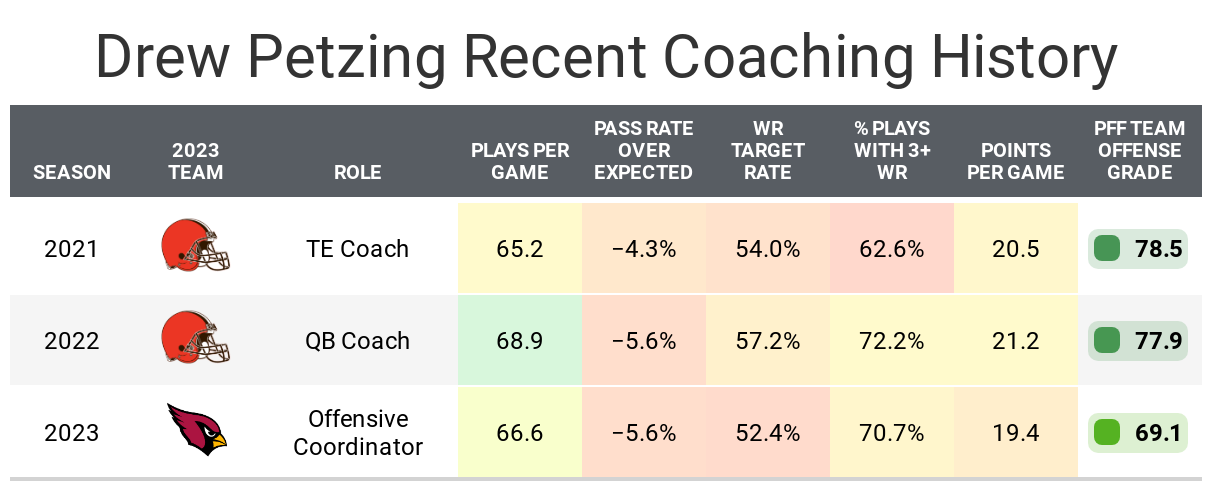
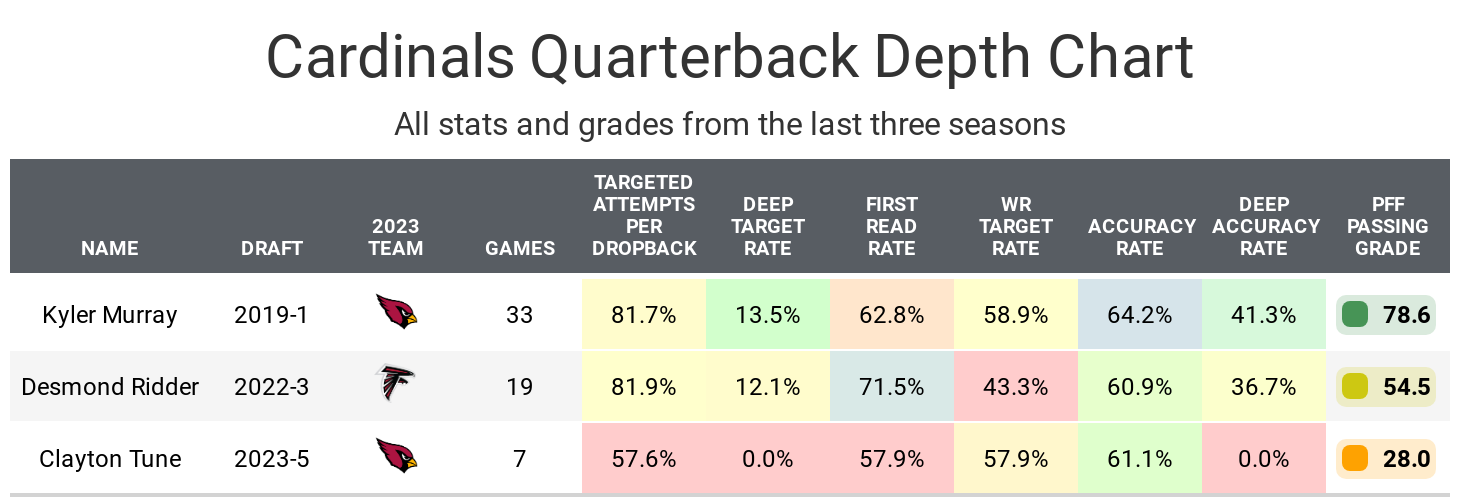
Bottom Line
Harrison has all of the makings of an elite fantasy wide receiver, which is why he should be the first pick in not just dynasty rookie drafts, but dynasty rookie superflex drafts. His exceptionally high ADP for a rookie wide receiver is warranted, but there is a chance the Cardinals will run a lot which could hurt Harrison’s overall volume.
Footnotes
- Statistics for the tables and charts were generally chosen based on their ability to predict future fantasy performance on either per game or per opportunity basis, or chosen for their ability to describe the player relative to other players at the same position.
- Opportunities for this purpose are defined by passing dropbacks, rushing attempts and receiving routes run.
- Numbers are either by season or based on the last three years. For rookies, only college numbers are included. For non-rookies, only NFL numbers are included, even if they played in college in the last three years.
- Because college competition is relatively easier than NFL competition, it can be expected that most rookies will see a decline in their numbers compared to their historic numbers.
- For all of the tables in this article, colors range from blue (good or high) to red (bad or low).
- All percentiles or colors compare the given player to other players with a high sample of opportunities. Generally, it’s one-third of the possible opportunities given the sample. If the player in question doesn’t have enough opportunities, they are still compared, even though a player could look good or bad on that small sample size which might not be as predictive.
- Information on running back utilization classifications and importance can be found here, wide receiver here and tight end here.
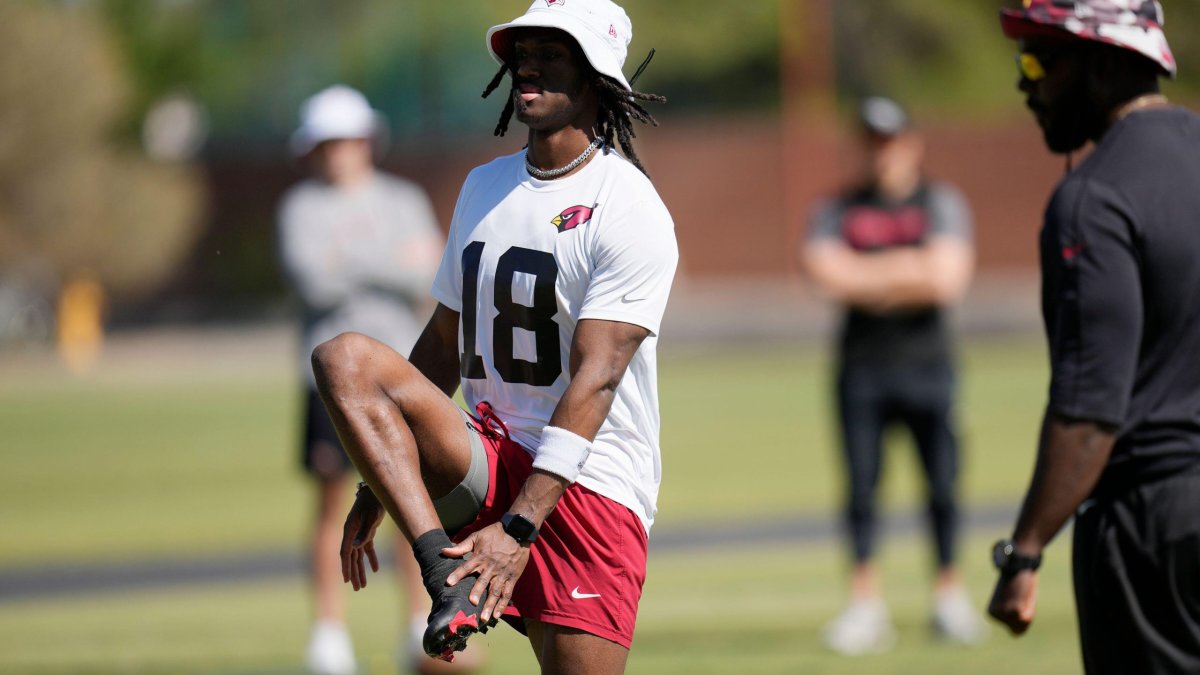



 © 2024 PFF - all rights reserved.
© 2024 PFF - all rights reserved.